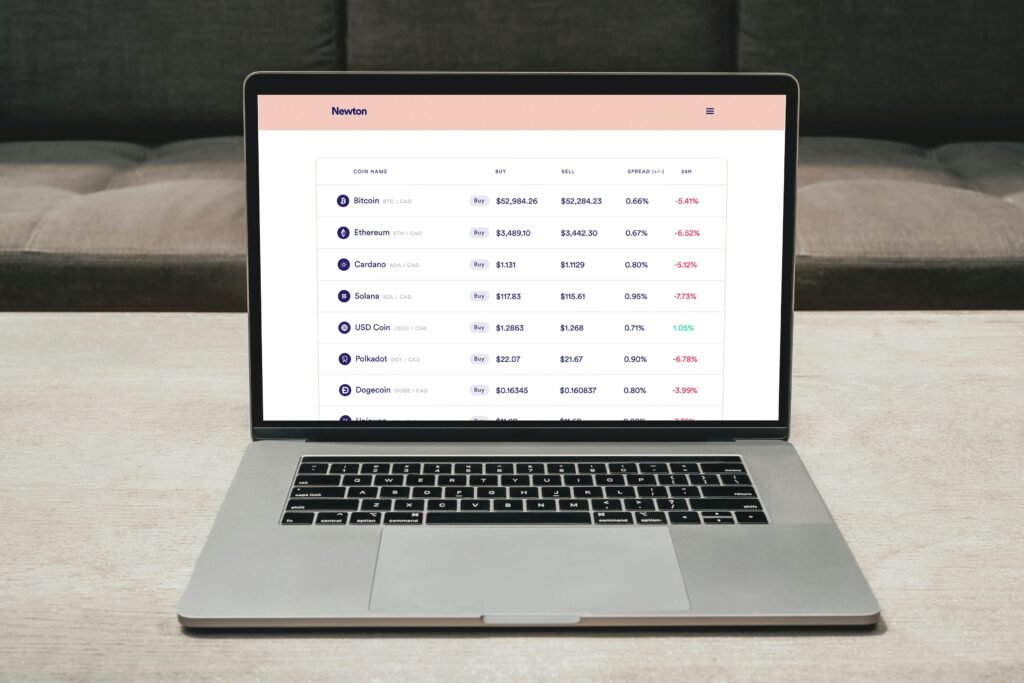Understanding Cryptocurrency Charts
Cryptocurrency charts are essential tools for traders and investors seeking to analyze market dynamics. These charts visually represent the price movements of cryptocurrencies over specific timeframes, allowing market participants to identify trends, patterns, and potential price points for purchasing or selling assets. By providing a graphical representation of historical price data, cryptocurrency charts enable investors to make informed decisions based on past performances and projected future movements.
In the realm of cryptocurrency trading, various types of charts are commonly utilized. The most basic form is the line chart, which connects closing prices over a set period, providing a straightforward view of price trends. However, line charts may lack crucial information regarding the volatility and intraday price fluctuations that many traders find beneficial. Another popular option is the bar chart, which displays open, high, low, and close prices for each time interval, offering a more comprehensive understanding of price action and making it easier to interpret market behavior.
This guide will focus primarily on candlestick charts, a favored chart type among cryptocurrency traders. Candlestick charts not only illustrate the same open, high, low, and close data displayed in bar charts but also employ a distinct visual approach that enables traders to quickly gauge market sentiment. The colorful bodies of candlesticks can indicate whether a cryptocurrency has experienced price increases or decreases during a specific timeframe, while the wicks show the higher and lower price levels reached. By mastering the utilization of these charts, traders can enhance their market analysis and develop effective trading strategies.
Understanding Candlestick Charts
Candlestick charts are a popular method for visualizing price movements in financial markets, particularly in cryptocurrency trading. Each candlestick represents a specific time period, during which the open, high, low, and close prices of an asset are recorded. The chart provides traders with a clear and concise view of market activity, allowing for easier interpretation of trends and price dynamics.
A single candlestick consists of two main components: the body and the wicks. The body illustrates the price range between the opening and closing prices. If the closing price is higher than the opening price, the candlestick is often colored green or white, indicating bullish sentiment. Conversely, if the closing price is lower, it may be colored red or black, suggesting a bearish outlook. The length of the body can indicate the strength of the price move—long bodies signify strong momentum, while short bodies may reflect indecision in the market.
Wicks, also known as shadows, extend from the body of the candlestick and indicate the highest and lowest prices reached within the specified timeframe. The upper wick shows the highest price, while the lower wick denotes the lowest price. These features are vital for traders, as they help to identify price rejection levels and possible reversals in market direction.
Additionally, various candlestick patterns can emerge, each with distinct implications for future market behavior. For instance, a “bullish engulfing” pattern signals a potential upward reversal, while a “shooting star” may indicate a possible downward trend. By studying these patterns, traders can develop insights into market psychology and make informed decisions about potential buy and sell opportunities.
Identifying Trends in Crypto Markets
Understanding trends in cryptocurrency markets is essential for effective trading decisions. Trends can be categorized into three primary types: upward, downward, and sideways. An upward trend is characterized by a series of higher highs and higher lows, indicating increasing bullish sentiment among traders. Conversely, a downward trend features lower highs and lower lows, reflecting bearish trends and declining interest in a particular cryptocurrency. Sideways trends denote a period of price consolidation, where the market fluctuates within a defined range without a clear direction.
To effectively identify these trends, traders often employ trend lines and channels. A trend line is drawn by connecting the prevailing highs or lows on a chart, helping to visualize the market’s direction. An upward trend line connects the lows, while a downward trend line connects the highs. Channels are formed by drawing parallel lines above and below the trend line, providing boundaries within which the price tends to move. This visual method allows traders to gauge potential entry and exit points, enhancing their decision-making process.
In addition to trend lines, various indicators can help confirm the presence and strength of a trend. Moving averages are among the most popular tools used in this regard. A simple moving average (SMA) smooths out price data over a specified timeframe, giving traders a clearer picture of the overall trend direction. When the price is above the moving average, it often signifies an upward trend, whereas it is typically seen as a downward trend when the price falls below the average.
Understanding the implications of different trend types is crucial for developing effective trading strategies. A trader can leverage upward trends to identify buying opportunities, while downward trends may signal the need for caution or short-selling. By recognizing these trends and utilizing appropriate analytical tools, traders can better navigate the unpredictable nature of the cryptocurrency markets.
Practical Tips for Reading Crypto Charts
Understanding crypto charts can significantly enhance a trader’s ability to make informed decisions in the volatile cryptocurrency market. One of the best practices is to combine candlestick analysis with trend identification. Candlesticks provide insight into market sentiment and price action over specific periods, while identifying trends—whether upward, downward, or sideways—gives context to this price action. Traders should look for patterns, such as bullish or bearish engulfing formations, which can hint at future price movements.
Another useful approach is utilizing multiple timeframes. By analyzing charts at different intervals, traders can gain a comprehensive perspective of the market. For instance, a trader might start by examining a daily chart for broader trend analysis, then shift to an hourly or 15-minute chart to fine-tune their entry and exit points. This layered analysis can illuminate short-term fluctuations within a macro trend, aiding in the anticipation of potential reversals or continuations.
Furthermore, recognizing market indicators is crucial for interpreting price movements accurately. Various indicators, such as the Relative Strength Index (RSI), moving averages, or MACD (Moving Average Convergence Divergence), can provide additional layers of information. Understanding these indicators can help traders gauge how overbought or oversold a cryptocurrency is, thereby informing decisions concerning potential buying or selling opportunities.
Lastly, continuous learning and experience are invaluable for improving chart-reading skills. Engaging with educational resources, joining forums, or practicing with demo accounts can lead to greater proficiency. As with any skill, becoming adept at reading crypto charts takes time and patience, but the insights gained can significantly enhance trading success.


















